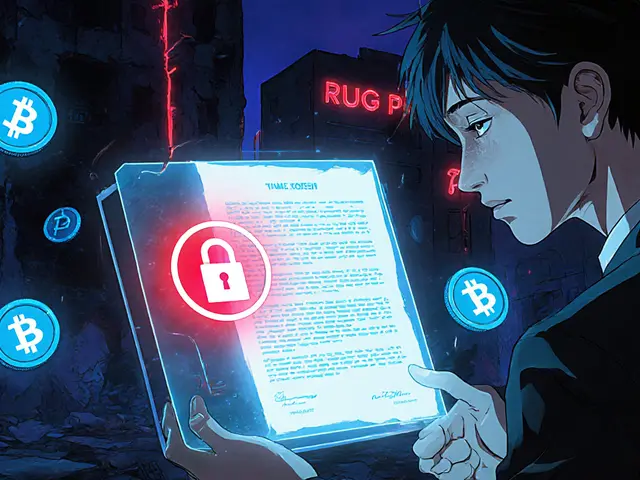WOETH Converter
Ever wondered how you can use Ether on blockchains that only understand ERC-20 tokens? WOETH is the answer. It’s a tokenized version of Ether that keeps a 1:1 peg, letting you hop between ecosystems without losing value.
TL;DR
- WOETH is a wrapped ERC-20 representation of Ether, maintaining a 1:1 value.
- It lets you access DeFi apps that require ERC-20 tokens while staying on Ethereum or other compatible chains.
- Wrapping involves locking ETH in a smart contract and minting an equal amount of WOETH.
- Risks include custody centralization, smart‑contract bugs, and temporary unpegging.
- Getting started only requires a compatible wallet (e.g., MetaMask) and a bridge or DEX that supports WOETH.
What Exactly Is WOETH?
Wrapped Origin Ether is a token that represents Ether (ETH) on the ERC‑20 standard, allowing it to be used wherever ERC‑20 tokens are required. The token lives on the Ethereum network but can also be minted on other EVM‑compatible chains via bridges. The "Origin" part hints at a link with Origin Protocol a platform that builds decentralized commerce and finance solutions, although the exact partnership details are still sparse.
How the Wrapping Process Works
Wrapping Ether follows a simple but secure flow:
- Send your ETH to a designated smart contract.
- The contract locks the ETH and issues the same amount of WOETH to your address.
- You can now trade, stake, or lend WOETH just like any ERC‑20 token.
- When you want the original ETH back, you burn (destroy) your WOETH.
- The contract releases the locked ETH to your wallet.
This entire cycle relies on smart contracts self‑executing code that runs on the blockchain without a middleman. Because the contracts are open‑source, anyone can audit the code to verify that each WOETH is truly backed 1:1 by ETH.
WOETH vs. Other Wrapped Tokens
While WETH is the most widely used wrapped Ether token, founded by the Ethereum community itself, WOETH positions itself as a bridge to Origin Protocol’s DeFi tools. Here’s a quick side‑by‑side look:
| Attribute | WOETH | WETH |
|---|---|---|
| Peg Ratio | 1 WOETH = 1 ETH | 1 WETH = 1 ETH |
| Primary Network | Ethereum (plus select EVM‑compatible chains via bridges) | Ethereum (and many L2s) |
| Custody Model | Centralized smart‑contract escrow (origin‑controlled) | Decentralized escrow (community‑governed) |
| Launch Year | 2022 (approx.) | 2016 |
| Key Use Cases | Access to Origin Protocol’s yield farms, NFT marketplaces, and cross‑chain DeFi | Liquidity provision on Uniswap, lending on Aave, general ERC‑20 compatibility |
Both tokens keep price parity with ETH, but WOETH’s niche lies in the tools built by Origin Protocol.

Where WOETH Gets Used
Because WOETH follows the ERC‑20 standard, any platform that accepts ERC‑20 tokens will also accept WOETH. Some popular spots include:
- Uniswap a decentralized exchange where users swap ERC‑20 tokens directly from their wallets - you can provide WOETH liquidity pairs and earn fees.
- MetaMask a browser‑based wallet that lets you interact with Ethereum dApps - simply add WOETH as a custom token and start trading.
- Origin Protocol’s own marketplace - buyers can pay with WOETH for NFTs or tokenized real‑world assets.
- Lending platforms like Aave (if they list WOETH) - you can earn interest by depositing the token.
All these use cases share a common advantage: they eliminate the need to convert ETH into an ERC‑20 format each time you want to interact with a dApp.
Risks You Should Know
Wrapped tokens bring convenience, but they also introduce new layers of risk:
- Custody Centralization: The ETH that backs WOETH sits in a smart contract owned or governed by Origin Protocol. If that entity were compromised, the peg could be at risk.
- Smart‑Contract Bugs: A flaw in the wrapping contract could allow malicious actors to mint extra WOETH or block withdrawals.
- Unpegging Events: During extreme market volatility, delays in the unwrapping process might cause WOETH price to drift temporarily from ETH.
- Bridge Vulnerabilities: If you move WOETH to another chain, the bridge’s security becomes a factor. Past bridge hacks have resulted in millions of dollars lost.
- Transaction Fees: Wrapping/unwrapping costs both gas fees and, occasionally, a small protocol fee.
Mitigation is straightforward: use audited contracts, keep only the amount you need on a bridge, and monitor the peg ratio via reputable price trackers.
Getting Started with WOETH
Here’s a quick checklist to help you mint your first WOETH:
- Install a compatible wallet like MetaMask and fund it with ETH.
- Visit a bridge that supports WOETH (e.g., the official Origin bridge portal).
- Enter the amount of ETH you want to wrap and approve the transaction.
- After the contract confirms, you’ll see an equivalent WOETH balance appear in your wallet. Add the token manually using the contract address if it doesn’t show automatically.
- Now you can trade WOETH on Uniswap, lend it on supported platforms, or use it in Origin Protocol’s marketplace.
- When you need the original ETH back, go back to the bridge, select “unwrap,” and confirm the burn transaction.
All steps typically take a few minutes and cost only the network gas fees.
Future Outlook for WOETH
Wrapped tokens are gaining traction as blockchain ecosystems strive for interoperability. Several trends could shape WOETH’s next chapter:
- Cross‑Chain Bridges: Newer, audit‑heavy bridges (e.g., LayerZero, Wormhole) will make it easier to move WOETH between Ethereum, Polygon, and Arbitrum.
- Ethereum Upgrades: With Ethereum’s roadmap focusing on scalability (sharding, proof‑of‑stake optimizations), transaction costs for wrapping could drop dramatically.
- Origin Protocol Expansion: If Origin launches more DeFi products that specifically accept WOETH, demand for the token may rise.
- Regulatory Clarity: As regulators start defining “wrapped assets,” clearer legal frameworks could boost institutional confidence.
In short, WOETH is positioned to benefit from both the broader push for token interoperability and the niche tools Origin Protocol builds. Keeping an eye on bridge security and the peg health will be essential for anyone holding the token.
Frequently Asked Questions
How is WOETH different from regular ETH?
Regular ETH is the native currency of the Ethereum network, usable directly for gas fees and staking. WOETH is an ERC‑20 token that represents ETH one‑to‑one, allowing it to be used in dApps that require ERC‑20 compatibility, such as most decentralized exchanges.
Can I unwrap WOETH at any time?
Yes. As long as the wrapping contract is functional and the bridge isn’t paused, you can burn your WOETH and retrieve the locked ETH. The process incurs gas fees and may take a few minutes.
Is WOETH safe to hold?
Safety depends on the smart‑contract audit quality, the bridge’s security, and the custody model. Use reputable bridges, keep only the amount you need, and stay updated on any security audits released by Origin Protocol.
Where can I trade WOETH?
WOETH is listed on major DEXs like Uniswap and can be added to any wallet that supports custom ERC‑20 tokens. Some lending platforms may also support it, so check the asset list of each protocol.
Do I need to pay a fee to wrap ETH?
The primary cost is the Ethereum gas fee for the transaction. Some bridges may charge a small protocol fee on top, but it’s usually a fraction of a percent.







Comments
Waynne Kilian
October 1, 2025 AT 02:08 AMI've been reading about WOETH and it feels like another step toward making ETH more flexible. The concept of wrapping origin ether could help bridge gaps between different DeFi platforms. I think it's worth keeping an eye on, especially as more tools adopt it. It might just simplify a lot of cross‑chain interactions.
Naomi Snelling
October 10, 2025 AT 22:15 PMEverything in crypto is a front for the elite to control our wallets.
Michael Wilkinson
October 20, 2025 AT 18:22 PMDon't take this lightly; wrapped tokens can be a vector for exploits. Stay vigilant.
Billy Krzemien
October 30, 2025 AT 14:28 PMWOETH essentially acts as a 1:1 representation of ETH, allowing you to move it into protocols that only accept ERC‑20 tokens. This can be especially handy for platforms that don’t support native ETH deposits. Just remember to use reputable bridges when converting, and always verify contract addresses. It’s a solid tool when used responsibly.
april harper
November 9, 2025 AT 10:35 AMWhat a fascinating twist-turning raw ether into a token that can dance across contracts! It feels almost poetic, the way we can now wrap and unwrap at will. Yet, I can't shake the feeling that we're just adding layers to an already complex beast.